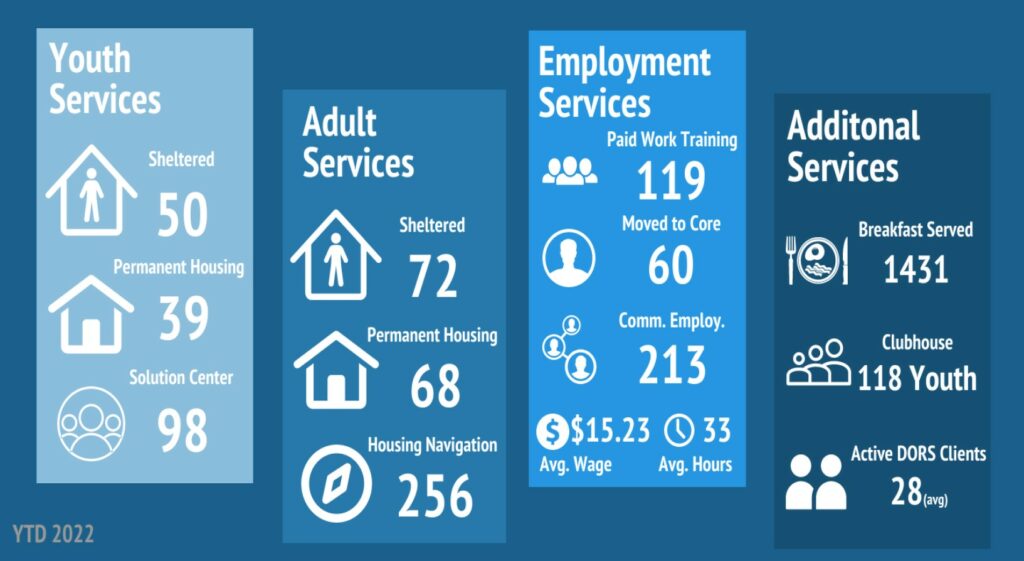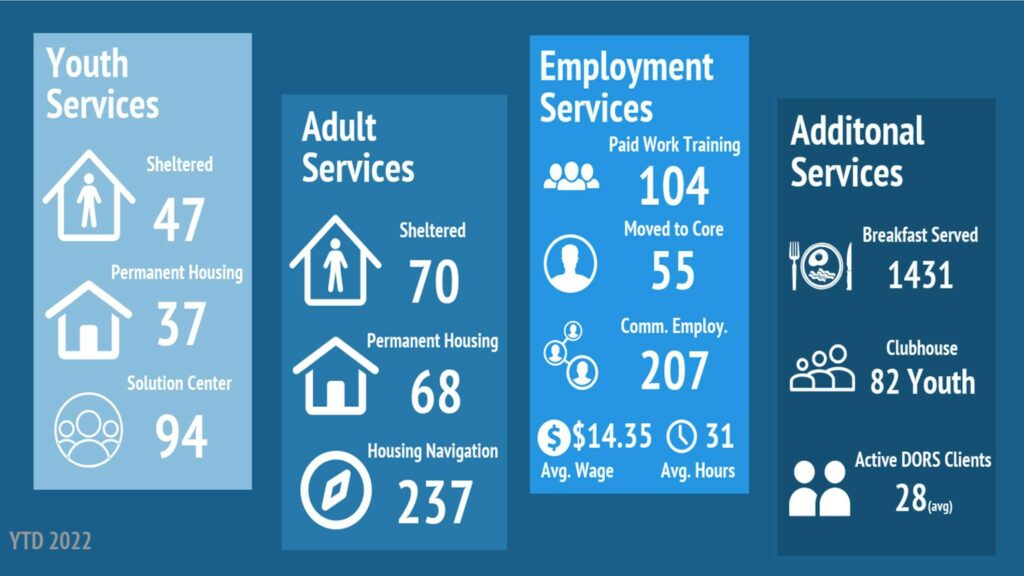Do you feel like you have too much stuff? You’re not alone:
Guest Author: Faith Wakefield for Today’s Homeowner with Danny Lipford
- 11.3 million tons of textile waste ends up in U.S. landfills every single year. That’s the equivalent of every single American throwing away 81.5 pounds of clothing annually.
- 12.1 million tons of furniture entered the waste stream in the U.S. in 2018, and sales of furniture in the U.S. increased by over $4 billion between 2019 and 2021.
- Experts now expect a massive influx of furniture sent to landfills after more Americans bought cheap furniture during the COVID-19 pandemic.
It’s undeniable: Americans are drowning in stuff. The rise of fast fashion, “fast furniture,” and wasteful habits have all contributed to this problem.
And yet, many families in need cannot afford basic necessities like clothing.
If you want to free yourself from clutter, there’s no time like the present to assess your belongings and break the cycle of overconsumption. You’ll be less stressed, less anxious, and can even feel more self-confident. You’ll also give back to your community if you donate items.
If you don’t know where to begin, we’ve got you covered: Start with our room-by-room checklist.
Top Decluttering Tips For Your Home: Room-by-Room Checklist
The first rule of decluttering is: Don’t try to tackle everything all at once. Organizing and decluttering can give you a huge sense of accomplishment, but if you try to take on too much, you’ll just get overwhelmed.
Instead, break up your decluttering mission by room. Then break it down even further. Go one cabinet, drawer, or shelf at a time. This is especially true if you have a lot of stuff in your house that needs to be donated, thrown out, or reorganized. If you focus on one small section of your home at a time, you’ll have a clear organization plan and ultimately accomplish more.
Follow our basic room-by-room checklist to get started. (Check off the boxes below or download our printable PDF here.)
The Bathroom
The bathroom is often overlooked when it comes to organizing, but this room can easily start overflowing with expired, old products. If your bathroom is full of forgotten skincare serums, unused Bath & Body Works gift sets or foundations that aren’t quite your shade, it may be time to reevaluate.

Additional tips for decluttering the bathroom:
- Some makeup and toiletry products expire after a few months, so throw out anything that is past its expiration date. In the future, you can label the date you open makeup products so that you know when they’ve gotten old.
- Reassess your bathroom routines and the products you use every few months to avoid overbuying.
- To maximize the functionality of your bathroom, keep only the products you use the most out on the counter, and put the rest away in drawers or bins.
The Bedroom
Your bedroom should be your “zen” space. But all too often, it becomes a dumping ground for piles of laundry, empty water cups, and the artwork you’ve meant to hang up for months (or even years). You don’t need to be overwhelmed by the mess — start one step at a time:
Additional tips for decluttering the bedroom:
- Tackle a bedroom decluttering project in stages. Organizing your nightstand, dresser, and closet separately can prevent an organization project from becoming unruly.
- Being selective about which items you want sitting out can make your space feel less cluttered and makes surfaces easier to clean.
- Utilizing floating shelves, wall hooks, and under-the-bed storage appropriately can help maximize your storage and display space.
The Closet and Clothing
For many people, clothing is the largest source of clutter in the home. An overabundance of clothing can not only overfill your closet and drawers but also spill into other aspects of your life. It makes doing laundry, keeping your space organized, and just choosing outfits each morning more stressful than necessary.

Additional tips for decluttering the closet:
- When going through your closet, have a close friend or family member help you decide what to keep or get rid of – having someone else there can encourage you to get rid of more items.
- When organizing your clothing, take account of what you have. Make a list of any items you actually need. When you’re out shopping for clothes, don’t buy anything new that is not on the list. This makes it easier to stop yourself from buying unnecessary clothing.
- If there are items that you haven’t worn much but would like to, hang them up in a prominent place in your closet. You’re more likely to wear something when it’s in your line of sight.
The Kitchen
Although every room in your home needs to work for you, the functionality of your kitchen may be the most important. Who wants to cook in a disorganized, overflowing mess of a kitchen? Once you declutter your kitchen, you’ll be excited to make delicious, home-cooked meals again.
Additional kitchen organization tips:
- Store holiday items or other items you rarely use in higher cabinets or away in storage containers.
- If you need additional storage space in your kitchen, try using a rolling cart. You can move it out of the way when it’s not in use, making kitchen tools more accessible.
- Storing pans, baking sheets, and other kitchen tools vertically rather than horizontally can prevent you from pulling everything out when you need to find one item.
The Living Room
The living room is the focal point of your home. When you have guests over, it’s almost guaranteed that they will spend time in the living room. But you want to enjoy the space, too.
That’s why you should use your living room to highlight the items you love the most and store away items you don’t want to look at. You’ll enjoy relaxing in your living room more, and your display items can serve as awesome conversation starters.
Additional living room organization tips:
- If extra throw pillows and blankets take up space in your living room, try putting them in an ottoman with built-in storage.
- If your living room tends to be a “catchall” space for random household items, try adding a collection basket for your family to use instead. Rather than immediately throwing items on the floor or tables, they can put things in the basket to be put away in the correct place later.
- The perfect time to complete home renovations is after a declutter. New built-in storage, energy-efficient windows, hardwood flooring, or simply a new coat of paint can transform your home and make it even more impressive to guests.
What Items Should You Keep, Throw Out or Donate to Charity?
Making decisions about what to keep, give or throw away can be difficult. When going through your stuff, focus first on each item’s purpose and how it makes you feel. It would be best if you predominantly kept things you genuinely enjoy, care about, or use.
10 Questions to Ask Yourself When Decluttering and Organizing
When deciding what to keep, throw away, or donate, the two most important questions to ask yourself are: Do I love it? Do I use it?

However, the reality is that the sorting process is not always that simple. If you’re having trouble deciding what to keep and what to get rid of, dig a little deeper with these questions:
- Do I love this item?
- How frequently do I use this item?
- Will I use this item in the near future?
- Is this item broken?
- If so, will I really repair it?
- Do I already have an item that serves the same purpose as this?
- Will not having this item impact my daily life?
- Is this item worth the clutter it’s creating?
- Does this item serve who I am today?
- Would I buy this item again?
If you’re grappling with the idea of permanently getting rid of items, try setting them aside. Put items you may want to get rid of in a box that you can put away for a few months. If you don’t reach for any of those items during that time, take those items to your nearest donation center.
What Items Can You Donate to Charity?
Some items can’t be dropped off at your local Horizon Goodwill store or donation center. These restrictions are often in place due to safety or size guidelines.
That being said, you may still be able to donate certain items elsewhere. For instance, larger organizations do not accept items like eyeglasses, large appliances, and medical devices. However, there are smaller charities that accept these items specifically.
Things you can donate:
- Clothing
- Household items and small appliances
- Jewelry and accessories
- Books
- Computers
- Furniture
To learn more about what items Goodwill accepts, click here.

Things you should only donate at designated charities or locations:
- Eyeglasses
- Large appliances
- Exercise equipment
- Old TVs and other large electronics
- Stuffed animals and pillows
- Hearing aids
- Walkers and wheelchairs
- Cribs
- Other medical or mobility devices
Things you can’t donate:
- Old mattresses
- Used toiletries, cosmetics, or haircare products
- Damaged or stained furniture or clothing
- Hazardous materials, including medical supplies, weapons, or cleaning supplies



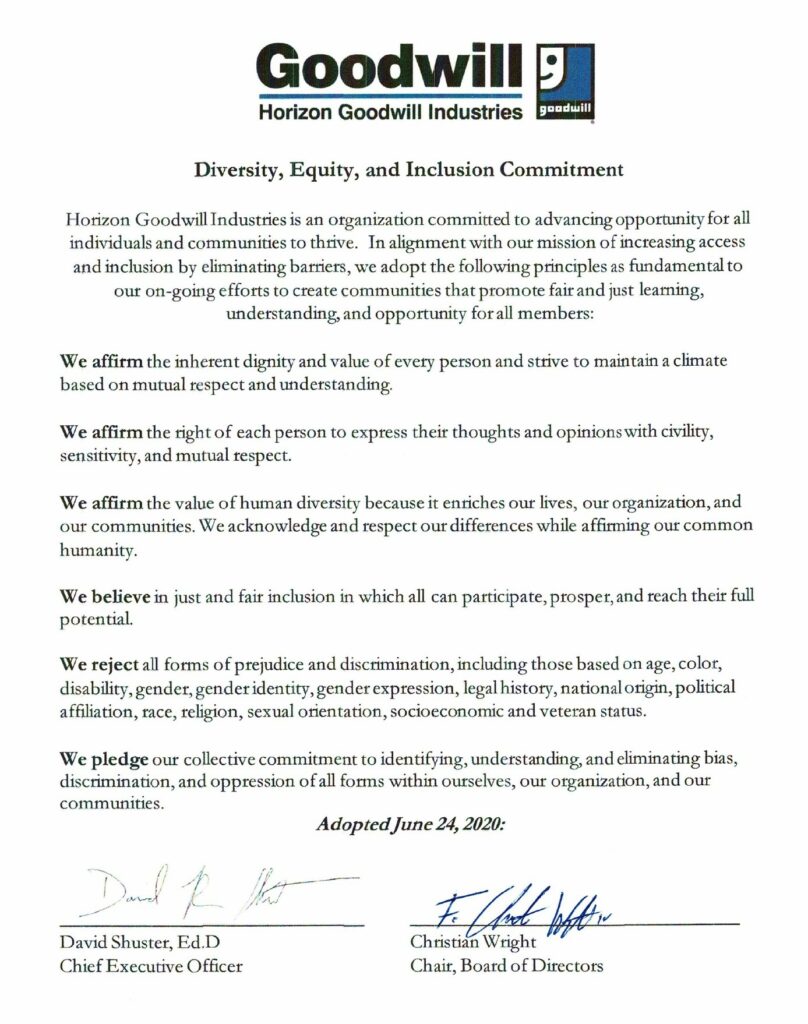
 The Hagerstown Health Hub is now open!
The Hagerstown Health Hub is now open!

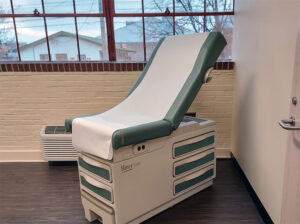

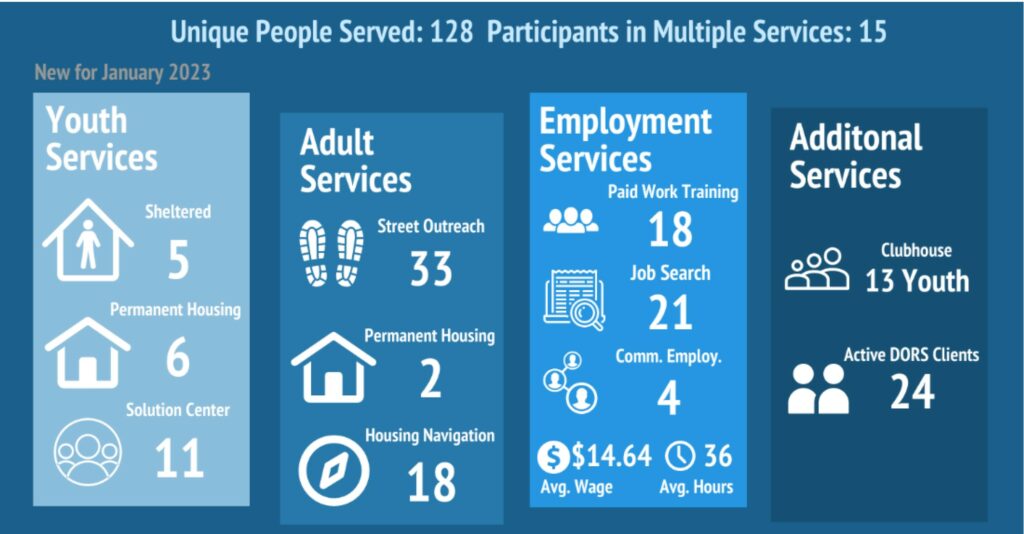

 Danny works for the Custodial Department of Business Services. He started at Horizon Goodwill on January 9, 2018, and works at the Sideling Hill Rest Area.
Danny works for the Custodial Department of Business Services. He started at Horizon Goodwill on January 9, 2018, and works at the Sideling Hill Rest Area.



 by Christopher Six,
by Christopher Six, 